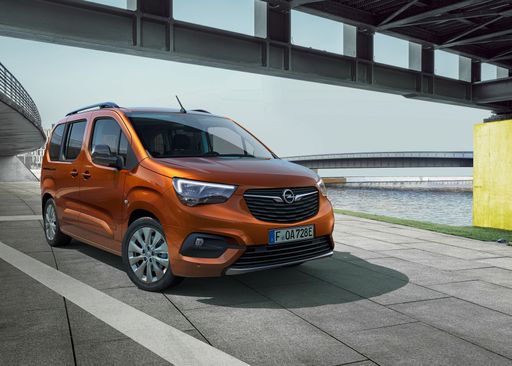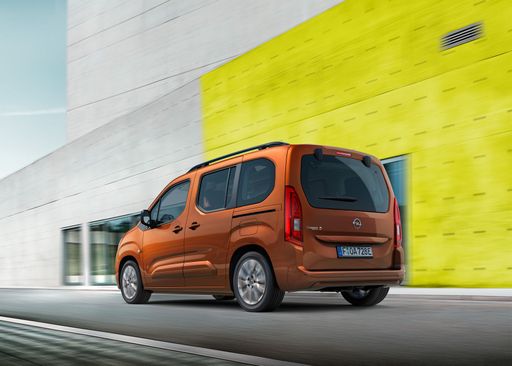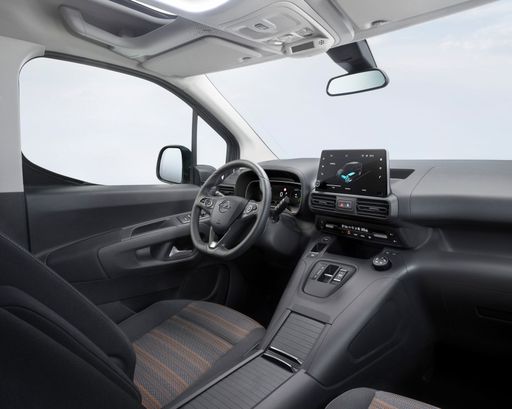Nissan Interstar VS Vauxhall Combo – Specs, Efficiency & Price Comparison
Which model is the better choice – the Nissan Interstar or the Vauxhall Combo? We compare performance (170 HP vs 136 HP), boot capacity ( vs 850 L), efficiency (7.40 L vs 18.50 kWh5.50 L), and of course, the price (34900 £ vs 24000 £).
Find out now which car fits your needs better!
The Nissan Interstar (Cargo Van) is powered by a Diesel or Electric engine and comes with a Manuel or Automatic transmission. In comparison, the Vauxhall Combo (High Roof Estate) features a Electric or Diesel engine and a Automatic or Manuel gearbox.
When it comes to boot capacity, the Nissan Interstar offers , while the Vauxhall Combo provides 850 L – depending on what matters most to you. If you’re looking for more power, you’ll need to decide whether the 170 HP of the Nissan Interstar or the 136 HP of the Vauxhall Combo suits your needs better.
There are also differences in efficiency: 7.40 L vs 18.50 kWh5.50 L. In terms of price, the Nissan Interstar starts at 34900 £, while the Vauxhall Combo is available from 24000 £.
Compare all the key specs now and find out which model fits your lifestyle best!
Nissan Interstar
The Nissan Interstar is a versatile van that expertly combines practicality with modern design. It offers a spacious interior that caters to both cargo and passenger needs, making it ideal for businesses and families alike. With its robust performance and efficient fuel consumption, the Interstar stands out as a reliable choice in the commercial vehicle market.
detailsVauxhall Combo
The Opel Combo high-roof estate car stands out for its impressive versatility, making it an ideal choice for both families and professionals. Its spacious interior and clever storage solutions ensure a comfortable ride and plenty of room for all your needs. With a focus on practicality and efficient design, the Combo seamlessly combines functionality with modern driving technology.
details @ media.stellantis.com
@ media.stellantis.com
 @ media.stellantis.com
@ media.stellantis.com
 @ media.stellantis.com
@ media.stellantis.com
 @ media.stellantis.com
@ media.stellantis.com

|
|
|
|
|
Costs and Consumption |
|
|---|---|
|
Price
34900 - 55600 £
|
Price
24000 - 36500 £
|
|
Consumption L/100km
7.4 - 7.5 L
|
Consumption L/100km
5.5 - 5.9 L
|
|
Consumption kWh/100km
-
|
Consumption kWh/100km
18.5 - 18.8 kWh
|
|
Electric Range
175 - 410 km
|
Electric Range
333 - 345 km
|
|
Battery Capacity
-
|
Battery Capacity
-
|
|
co2
0 - 195 g/km
|
co2
0 - 155 g/km
|
|
Fuel tank capacity
80 L
|
Fuel tank capacity
53 L
|
Dimensions and Body |
|
|---|---|
|
Body Type
Cargo Van
|
Body Type
High Roof Estate
|
|
Seats
3 - 7
|
Seats
5 - 7
|
|
Doors
4
|
Doors
4 - 5
|
|
Curb weight
2053 - 2535 kg
|
Curb weight
1530 - 1922 kg
|
|
Trunk capacity
-
|
Trunk capacity
597 - 850 L
|
|
Length
5680 - 6315 mm
|
Length
4410 - 4760 mm
|
|
Width
2080 mm
|
Width
1848 mm
|
|
Height
2498 - 2756 mm
|
Height
1812 - 1818 mm
|
|
Payload
965 - 1447 kg
|
Payload
430 - 840 kg
|
Engine and Performance |
|
|---|---|
|
Engine Type
Diesel, Electric
|
Engine Type
Electric, Diesel
|
|
Transmission
Manuel, Automatic
|
Transmission
Automatic, Manuel
|
|
Transmission Detail
Schaltgetriebe, Automatikgetriebe
|
Transmission Detail
Schaltgetriebe, Automatikgetriebe
|
|
Drive Type
Front-Wheel Drive
|
Drive Type
Front-Wheel Drive
|
|
Power HP
105 - 170 HP
|
Power HP
102 - 136 HP
|
|
Acceleration 0-100km/h
-
|
Acceleration 0-100km/h
11.30 s
|
|
Max Speed
115 - 177 km/h
|
Max Speed
135 - 184 km/h
|
|
Torque
300 - 380 Nm
|
Torque
250 - 300 Nm
|
|
Number of Cylinders
4
|
Number of Cylinders
4
|
|
Power kW
77 - 125 kW
|
Power kW
75 - 100 kW
|
|
Engine capacity
1997 cm3
|
Engine capacity
1499 cm3
|
General |
|
|---|---|
|
Model Year
2024 - 2025
|
Model Year
2024
|
|
CO2 Efficiency Class
G, A
|
CO2 Efficiency Class
A, E
|
|
Brand
Nissan
|
Brand
Vauxhall
|
Nissan Interstar
The Evolution of the Nissan Interstar
The Nissan Interstar has long been a staple in the commercial vehicle sector, known for its robust build and practical design. The latest iterations have further cemented its status with a range of technical enhancements and innovative features aimed at aiding businesses in achieving optimal efficiency. Whether you're navigating city streets or traversing the highways, the Interstar stands out as a reliable workhorse ready to meet various transport needs.
Power and Performance
The current range of Nissan Interstar models boasts diesel engines ranging from 105 to 180 PS, offering a commendable blend of power and fuel efficiency across the board. With a fuel consumption of between 7.4 and 7.5 litres per 100 kilometres, these vehicles are designed to minimise operational costs while maximizing performance.
All models feature four-cylinder engines, with engine displacement between 1997 and 2299 cm³, capable of producing torque figures between 330 and 400 Nm. These specifications ensure that the Interstar offers superior pulling power, which is particularly useful for transporting heavy loads across different terrains.
Transmission and Drive Options
Versatility is at the heart of the Nissan Interstar, with transmission options including both manual and automatic gearboxes. Drivers can also choose between front-wheel and rear-wheel drive configurations, allowing the vehicle to suit specific logistical requirements or personal preferences.
For those seeking simplicity and ease of use in urban environments, the Interstar with its automated gearshift provides a smooth driving experience, reducing driver fatigue and increasing focus on the road ahead.
Dimensions and Load Capacities
The Nissan Interstar is available in various lengths, from 5048 mm to an extensive 6848 mm, catering to diverse commercial needs. With widths ranging from 2070 mm to 2222 mm and heights from 2307 mm to 2808 mm, the Interstar offers multiple configurations to maximise cargo space and accommodate various loads.
With a maximum payload capacity of up to 1451 kg, businesses can rest assured that the Interstar is more than capable of delivering goods efficiently without compromising on safety or comfort.
Innovation and Technological Features
While functionality remains a priority, Nissan has not skimped on technological advancements. Among the innovations included are advanced safety features, such as anti-lock braking systems (ABS), electronic stability control (ESC), and a variety of sensors to assist with parking and reversing.
In terms of driver comfort, the brand offers multiple trim levels with exceptional interior features designed to enhance driver experience during long hauls. Options such as climate control, advanced navigation systems, and modern infotainment setups are available, ensuring that both driver and passenger remain comfortable and connected, regardless of the journey length.
Coachwork and Trim Options
The Interstar line-up provides a range of trim levels and equipment lines, from the entry-level Visia to the high-spec Tekna, catering to different market demands and individual preferences. The selection allows buyers to prioritise features that best suit their operation or driving style.
For example, the N-CONNECTA variant offers an array of added extras, enhancing both connectivity and comfort for drivers who rely on the vehicle as a mobile office.
Conclusion
The Nissan Interstar represents a harmonious blend of power, efficiency, and technological innovation in the large van segment. With its vast array of options and features, the Interstar is undeniably a top choice for businesses looking to invest in a dependable and adaptable commercial vehicle. As the line-up continues to evolve, the Interstar remains poised to meet the growing challenges and demands of the modern logistic landscape.
Vauxhall Combo
A Revolutionary Take on Family Transport
The Opel Combo Hochdach-Kombi stands out as a versatile solution in the ever-evolving landscape of family vehicles. With a focus on practicality and innovative design, this model offers significant improvements in efficiency and user experience.
Technical Specifications at a Glance
The latest Opel Combo represents a leap forward in electric vehicle technology. With an efficient electric motor delivering 136 PS (100 kW) and a 0-100 km/h time of 11.3 seconds, it's built to combine performance with sustainability. A notable feature is the impressive range, spanning from 333 km to 345 km, making it a reliable choice for both urban commuting and longer journeys.
Space and Versatility Redefined
Flexibility is key with the Combo's design. Available in configurations accommodating 5 to 7 seats, the interior space is complemented by a generous boot capacity ranging from 597 litres to 850 litres. This ensures ample room for family and gear, without compromising on comfort. The tall roofline and clever interior design maximize passenger headroom and storage options.
Innovations in Efficiency
Powered by a modern electric powertrain, the Combo achieves a consumption rate between 18.5 and 18.8 kWh/100 km. This meticulous balance of power and efficiency results in zero CO2 emissions, positioning the vehicle firmly within the A CO2-efficiency class. Front-wheel drive (FWD) ensures stability and handling confidence, aided by a sophisticated automatic transmission system.
Cost and Economy
With a price range from €38,600 to €42,600, the Combo offers a competitive entry into the electric vehicle market. Factor in the cost savings associated with electric motoring, such as reduced maintenance and fuel costs, and the Combo rapidly establishes itself as a wise investment for the eco-conscious driver.
Design and Aesthetic Appeal
The Combo’s exterior length spans between 4410 mm and 4760 mm, providing a balanced profile that combines practicality and style. Available in several stylish trims — including Edition, GS, and options for either five or seven-seater models — the Combo is adept at catering to a range of stylistic preferences and needs.
Conclusion: A Future-Ready Choice for Families
The Opel Combo Hochdach-Kombi captures the spirit of modern motoring needs, offering a sustainable, spacious, and affordable solution for families. With technological advancements that enhance both performance and efficiency, it strongly represents the future of transportation, making it an ideal choice for those looking to transition to electric driving without compromising on practical needs.
The prices and data displayed are estimates based on German list prices and may vary by country. This information is not legally binding.
